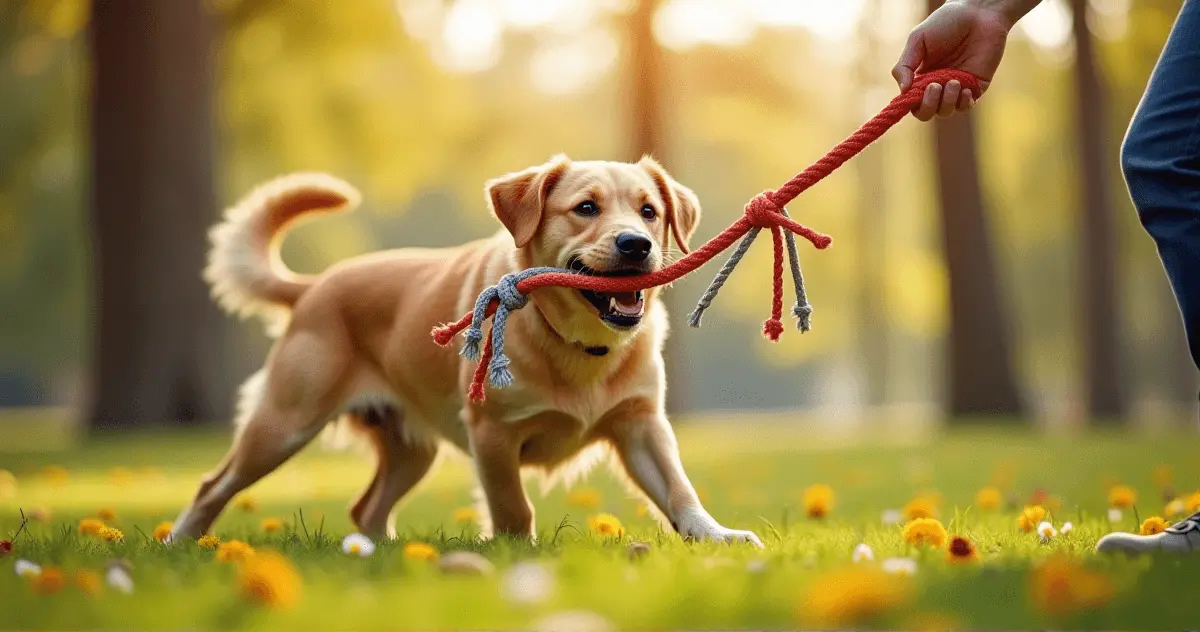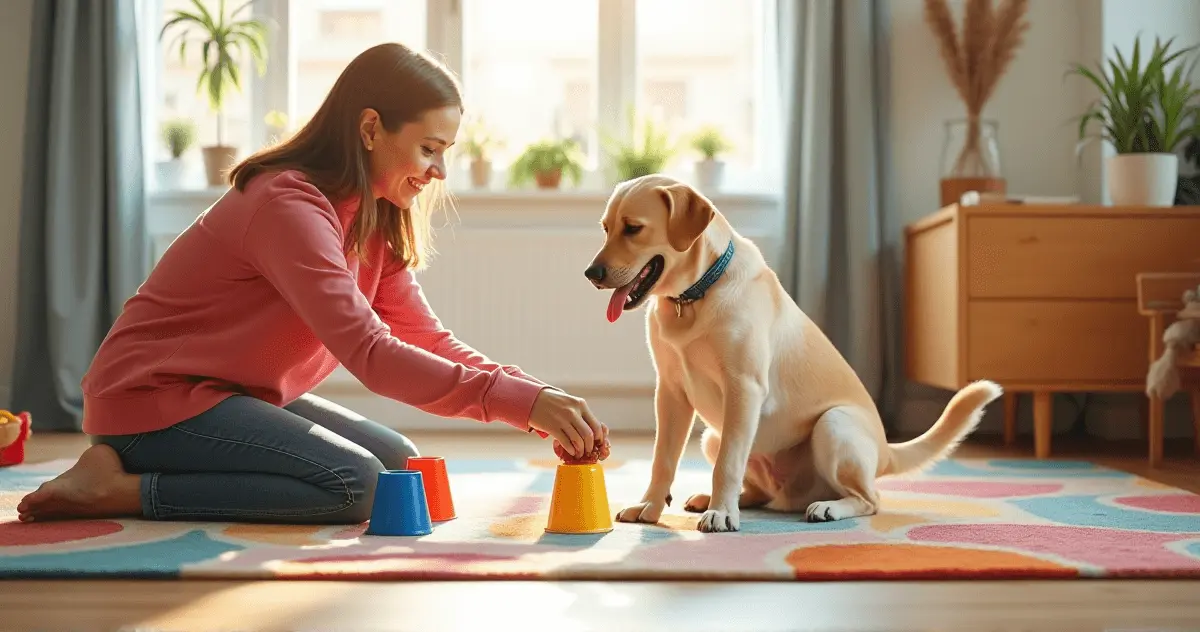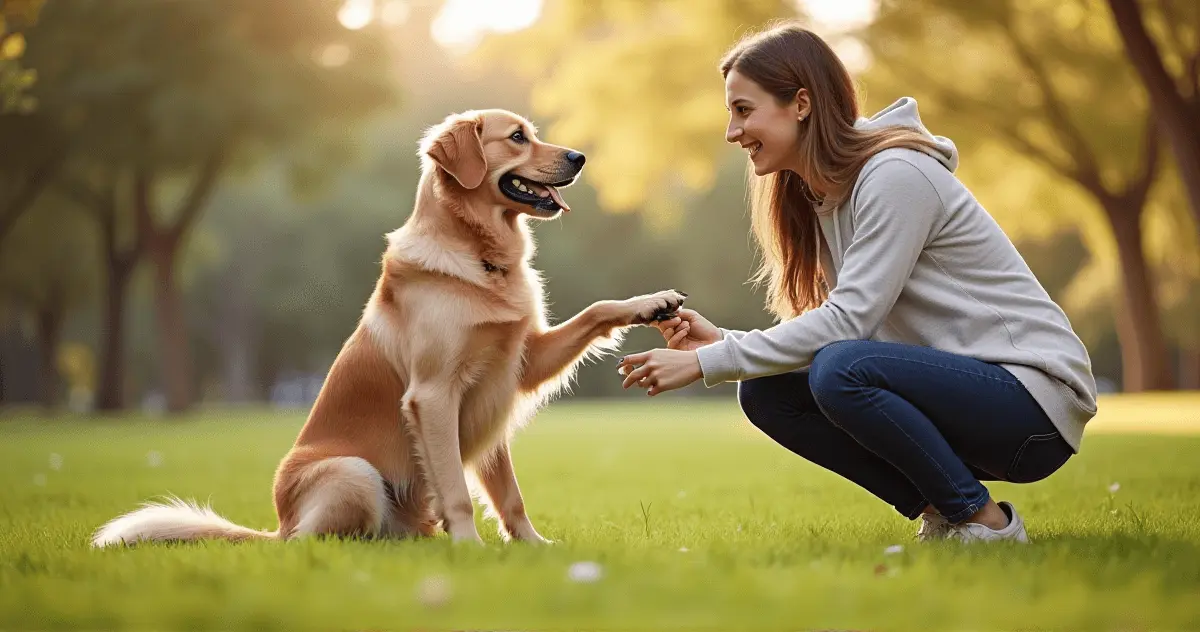Can All Dogs Be Trained? Understanding Your Dog’s True Needs
Explore essential care tips and uncover the truth about training all dog breeds.
Have you ever wondered if your dog has specific needs that you might be overlooking?
Many dog owners are unsure about what their dogs truly need and whether all dogs are capable of being trained.
This post will give you clear guidance on fulfilling your dog's needs and explain how every dog can be trained with the right approach.
- Understand the basics of what dogs require for health and happiness.
- Learn how to train any dog, regardless of breed or age.
- Discover how meeting your dog’s needs strengthens your bond.
Discover science-backed games and techniques designed to unlock your dog’s potential.
Learn more about brain training for dogs

What Do Dogs Really Need?
🌱 Takeaways
- Dogs require balanced nutrition, exercise, and mental stimulation for overall well-being.
- Emotional and social needs, like companionship and positive interactions, are vital.
- Meeting these needs prevents behavioral problems and improves your dog’s quality of life.
📄 Dogs need more than food and shelter—they thrive with proper nutrition, regular exercise, mental stimulation, and emotional support. Understanding these basics ensures your dog lives a happy and healthy life.
Every dog has fundamental needs that go beyond the basics of food, water, and shelter. Proper nutrition is crucial for their health and energy levels, while exercise keeps their body fit and prevents obesity. Equally important is mental stimulation—games, toys, and training exercises help prevent boredom, which can lead to destructive behaviors. Dogs also have strong emotional and social needs; they thrive on companionship and consistent positive interactions with humans and other pets.
- Feed a diet appropriate for your dog’s size, age, and health.
- Engage in regular exercise like daily walks or play sessions.
- Provide mental stimulation through puzzle toys or training exercises.
- Ensure your dog has social interaction to prevent loneliness.

Can All Dogs Be Trained?
🌱 Takeaways
- All dogs are trainable, but breed, age, and temperament influence training approaches.
- Consistency and patience are key to effective training.
- Understanding your dog’s unique traits helps tailor the training process.
📄 While every dog can be trained, their individual characteristics—like breed, age, and temperament—play a role in shaping the training approach. With patience and the right methods, you can guide your dog toward desired behaviors.
Many people believe that certain breeds or older dogs are untrainable, but this is a myth. All dogs can be trained with the right approach, though some may require more time and tailored strategies. Breed-specific tendencies, such as a Labrador’s enthusiasm or a Husky’s independence, can influence the ease and speed of training. Similarly, age plays a role—puppies may absorb training faster, but older dogs can learn too, as long as sessions are consistent and positive.
- Start with basic commands like 'sit' and 'stay.'
- Use positive reinforcement—reward good behavior with treats or praise.
- Keep training sessions short and consistent to prevent frustration.
- Adapt techniques to suit your dog’s breed and personality.
This step-by-step program uses positive reinforcement to help every dog master commands.
Start training smarter today

What Training Reveals About Your Dog's Needs
🌱 Takeaways
- Training helps identify your dog's preferences, fears, and strengths.
- Tailored training builds trust and strengthens your bond with your dog.
- Understanding your dog’s needs through training enhances their well-being.
📄 Training is not just about teaching commands—it’s a way to learn about your dog’s unique personality, preferences, and emotions. This understanding allows you to meet their needs better and foster a deeper connection.
Training provides a unique window into your dog's personality and needs. For instance, a dog that excels in puzzle-solving might benefit from more mentally stimulating activities, while one that seems hesitant around new environments might require extra socialization. Each interaction during training uncovers insights into what excites or worries them, enabling you to adapt your approach.
- Observe how your dog reacts to different types of activities during training.
- Adjust training exercises to cater to their strengths and address their challenges.
- Use training as an opportunity to build trust and communication.
- Incorporate games and activities that make learning enjoyable.

Simple Tips to Understand Your Dog
🌱 Takeaways
- Observing your dog’s body language and behavior provides valuable insights into their needs.
- Simple activities like hiding a toy can reveal their problem-solving skills.
- Establishing a consistent routine builds your dog’s confidence and sense of security.
📄 Understanding your dog starts with observing their behavior and creating routines that cater to their natural instincts. Simple activities and consistent care help build trust and confidence.
Understanding your dog doesn’t require complex techniques—it starts with simple observations. Notice how your dog reacts to various stimuli, like unfamiliar scents, sounds, or activities. Their responses can provide a wealth of information about their preferences and needs. For example, if your dog loves chasing toys, they might benefit from more activities that engage their hunting instincts.
- Watch for subtle changes in body language, like tail position or ear movement.
- Try hiding a favorite toy to see how your dog approaches problem-solving.
- Maintain a consistent daily schedule for feeding, walks, and playtime.
- Use positive reinforcement to encourage behaviors you’d like to see more of.
🍎 Key Takeaways
- Dogs have basic physical, emotional, and social needs that must be met for their well-being.
- All dogs are trainable with the right methods and a patient approach.
- Training helps uncover your dog’s unique personality and needs, strengthening your bond.
Meeting your dog’s needs and understanding their behavior creates a stronger bond and ensures they live a happy, healthy life. Training not only teaches commands but also reveals insights into their personality and preferences.
Want to better understand how your dog perceives and interacts with the world? Explore our post on The Dogs World: How They Perceive and Behave.
Join the brain training revolution
-
American Kennel Club (AKC)
Trainable Dog Breeds: Meet 13 Smart and Hard-Working BreedsThe AKC emphasizes that while certain breeds are renowned for their trainability, nearly every dog can be trained. Success hinges on patience and tailored training methods to suit individual dogs' needs.
-
The Spruce Pets
How to Care for Your Dog's Basic NeedsThis resource outlines essential aspects of dog care, including proper nutrition, regular exercise, mental stimulation, and routine health check-ups, all vital for a dog's overall well-being.
-
WebMD
Dog Nutrition: Essential Nutrients for Health and Feeding BasicsWebMD details the fundamental nutrients dogs require—proteins, fats, carbohydrates, vitamins, minerals, and water—and offers guidance on feeding schedules to maintain optimal health.
-
ASPCA
General Dog CareThe ASPCA provides comprehensive advice on general dog care, emphasizing the importance of exercise, grooming, and regular veterinary visits to ensure dogs lead healthy and happy lives.
-
Alpha Trained Dog
Can All Dogs Be Trained?This article asserts that, with few exceptions, all dogs are trainable. It discusses factors influencing trainability, such as breed characteristics and individual temperaments, and underscores the importance of patience and consistency in training.




